International Journal of Nanomaterials, Nanotechnology and Nanomedicine
Application of Polymer Sheets with Anchor Ribs in the Repair and Reconstruction of Reinforced Concrete Water Supply Storage Structures
Biryukov Alexander Nikolaevich1*, Biryukov Yuri Alexandrovich2 and Sargan Dmitry Leonidovich2
1Professor, Doctor of Technical Sciences, Military Academy of Logistics named after General of the Army A.V. Khrulev, 22 Zakharyevskaya St., Saint Petersburg 191123, Russia
2Doctor of Technical Sciences, Military Academy of Logistics named after General of the Army A.V. Khrulev, 22 Zakharyevskaya St., Saint Petersburg 191123, Russia
Cite this as
Nikolaevich BA, Alexandrovich BY, Leonidovich SD. Application of Polymer Sheets with Anchor Ribs in the Repair and Reconstruction of Reinforced Concrete Water Supply Storage Structures. Int J Nanomater Nanotechnol Nanomed. 2024;10(2):081-087. Available from: 10.17352/2455-3492.000066Copyright License
© 2024 Nikolaevich BA, et al. This is an open-access article distributed under the terms of the Creative Commons Attribution License, which permits unrestricted use, distribution, and reproduction in any medium, provided the original author and source are credited.The conducted studies have shown that no optimal and effective solution would ensure reliable operation throughout the entire service life of tank structures. The search for effective and innovative technical solutions in this area is a pressing issue. The study aims to determine an effective material for providing secondary protection of a reinforced concrete structure to increase the operational characteristics of tank structures. The conducted experimental studies have shown the possibility of using a polymer sheet with anchor ribs as protection for a reinforced concrete structure. Protection of reinforced concrete structures remains a key aspect of the design and operation of facilities exposed to aggressive media. The conducted studies have shown that there is no optimal and effective solution providing reliable operation during the whole service life of capacitive structures. Search for effective and innovative technical solutions in this area is an urgent task. The research aims to determine an effective material for secondary protection of reinforced concrete structures to increase the operational characteristics of capacitive structures. The performed experimental studies showed the possibility of using polymer sheets with anchor ribs as protection for reinforced concrete structures. The article discusses the use of polymer sheets with rail-shaped anchor ribs for protection of the inner surface of reinforced concrete engineering structures from aggressive influence.
Introduction
In today's world, infrastructure is aimed at improving the standard of human life and development. One of the most important systems in terms of responsibility for the functionality of infrastructure is the water supply system.
Water of the required quality dramatically reduces the risk of epidemic diseases, has a beneficial effect on people's health, and creates conditions for a comfortable life.
Water supply systems must operate with a high degree of reliability since the functionality of all municipal facilities depends on their operation.
For water supply to facilities located within the borders of the North-Western part of the Russian Federation, it is necessary to ensure the uninterrupted operation of water intake storage facilities including: drinking water storage tanks, settling tanks, filters, and dehumidifiers. The solution to this problem is possible only if the necessary measures are taken to protect the structures of storage facilities from the effects of water and other aggressive environments.
The impact of various factors causing defects and damage [1-3] to the internal enclosing structures of water supply and sanitation tanks can be assessed by the development of physical wear in them [4,5]. The main problems of defect occurrence are various mechanical, physical, and chemical effects on reinforced concrete structures associated with different factors of influence [6-9]. The main mechanical influences are, as a rule, the destruction of the surface by hard abrasive grains, atmospheric moisture in a liquid or solid state, falling from clouds or settling from the air onto the earth's surface, impact (short-term) and long-term overloads, as well as overloads with high rates of increase and large amplitude values that occur in emergencies [5,9-12]. The influence of chemical factors is often determined by aggressive environments of industrial and domestic wastewater, atmospheric water (rainwater) and others [13,14]. The degree of aggressiveness of the environment [10,15,16] depends on the presence of external and internal factors of concrete corrosion [17-22]. The external factor of corrosion is the aggregate state of the environment [15,23], temperature [20,24], humidity [9,10], and the pressure of the environment [14,23,25] on concrete. The internal factor is the composition and structure of concrete [1,2,5,7,24]. To ensure uninterrupted operation and maintenance of reinforced concrete structures [10,16,17,24,26] of water supply system storage facilities in good technical condition, their reliable protection is necessary [16,24,28].
To ensure uninterrupted operation and maintenance of reinforced concrete structures [3,22] of water supply system storage facilities in good technical condition, their reliable protection is necessary [27-34].
Based on the experience of using existing types of primary and secondary protection of engineering structures during their operation, their insufficient reliability becomes obvious [2,5,7,34].
The theory of long-term protection of reinforced concrete structures, when exposed to aggressive environments, is based on the theory of structural reliability of operation of building structures [23,18], that is, the ability of the structure to resist destruction with a sufficient degree of probability [16], accompanied by various potentially dangerous impacts [24], characteristic of load-bearing, enclosing structures [10,23,21] and their protective coatings.
Work in the field of protection of reinforced concrete structures [26,17,16] is of great importance for improving the operational characteristics of structures [16,21] in general and increasing the period of their maintenance-free operation [8,9]. Currently, research is ongoing to develop innovative materials [4,5,10,22] for secondary protection of reinforced concrete structures [3,5,7] exposed to aggressive environments [9,14]. The use of polymer sheets with rail-shaped anchor ribs [1,11,23,34-36] for protecting the inner surface of reinforced concrete structures of tank facilities [10] from aggressive impact [9,14] contributes to their longer operation while maintaining the original technical parameters [10,16,21], is of great importance for the construction industry.
Study
Existing storage facilities that have been in operation for 25-30 years are mainly made of reinforced concrete monolithic, precast, and precast-monolithic structures in ground, loose, or recessed design [3,5,10,27].
Practically it is considered that the average lifespan of water supply storage facilities is 50 years. The research conducted by the authors [10,16,21] (a selective inspection of the internal surface of reinforced concrete structures of water supply tank structures at objects of the North-Western part of Russia that have been in operation for more than 20-25 years), showed worsened technical condition (Table 1).
Materials and methods
The main causes of defects are mechanical, physical, and chemical effects on reinforced concrete structures. Mechanical impacts include abrasive wear, precipitation, overloading, and mechanical impact. Physical effects are associated with temperature-shrinkage deformations, wear and aging of concrete, and freezing and thawing of concrete. Low deformability of concrete can lead to the formation of microcracks in case of heavy deformations of the bottom, walls, and coating of the tank, deformations of the entire structure caused by uneven soil precipitation [5,9-1215,16].
Based on the research carried out experimentally, a scheme was developed for the application of forces and the resulting deformations under the action of atmospheric pressure and groundwater pressure on a layer of polymer material (Figure 1), anchored in the reinforced concrete walls of tank structures using ribs with a cylindrical widening at the top. In this diagram, it is assumed that the polymer layer is anchored in the concrete at points a and b (Figure 2).
Designations (Figure 1): h – diagram of hydrostatic load uniformly increasing by the height of the entire structure; h1 – diagram of hydrostatic load uniformly increasing by a certain height of the structure; h2 – diagram of non-uniform hydrostatic load by a certain height of the structure; L – uniform diagram of hydrostatic load by the width of the structure.
In Figure 2, SH is the initial length of the polymer layer adjacent to the surface of the pipe. As a result of the influence of atmospheric pressure and groundwater pressure, the polymer layer between the anchors stretches somewhat, peels off from the concrete, and takes a new position along a circle of radius r. The length of the section of the polymer layer between the anchors increases and becomes equal to Sk, and the angle between the radii drawn from the center O to two adjacent anchors becomes equal to α. A polymer material is characterized by an elastic modulus E and tensile strength within the elasticity limits σp, which is taken equal to the value of its proportionality limit. Concerning high-density polyethylene, this tensile strength, with a margin, is taken equal to 5 MPa [4,5,10,22,12].
Chemical exposures are caused by aggressive substances. The internal surfaces of water supply storage facilities' reinforced concrete structures are affected by chemically active substances dissolved in water. Concrete has a porous structure and a rough surface, so it is characterized by high water absorption, gas permeability, susceptibility to corrosion, and abrasive hydropower. During operation, the concrete of the underwater zone is exposed to dissolved sulfates and chlorides, an alkaline environment, chlorine, ozone, sodium hypochlorite, and in the surface zone - carbon dioxide from the air.
When concrete is exposed to organic and non-organic environments, the following types of corrosion should be distinguished, as given in Table 2.
Results
To protect against mechanical, physical, and chemical impacts, reliable protection of the inner surface of reinforced concrete structures of large water supply facilities is necessary. Primary protection by providing high chemical resistance, water resistance, and wear resistance of cement concrete is not reliable enough. Therefore, during major repairs and reconstruction of water supply storage facilities, secondary concrete protection is used with special coatings that ensure complete isolation of the structure from the aggressive environment [11,12,32,34]. The combined use of primary and secondary protection is the most reliable. Protection of concrete and reinforced concrete structures in the Russian Federation is regulated by normative documents 28.13330.2017 "Protection of building structures against corrosion", 72.13330.2016 "Protection of building structures and structures against corrosion", 229.1325800.2014 " Reinforced concrete structures of underground structures and communications. Corrosion protection" and state standard 31384-2017 "Protection of concrete and reinforced concrete structures from corrosion. General technical requirements", and in European EN 1504 "Products and systems for the protection and repair of concrete structures. Definitions, requirements, quality control, and evaluation of conformity (Part’s: 1-10).
Protection of internal surfaces of tank structures should meet the following requirements: be resistant to aggressive environment, strong, resistant to abrasion, and mechanical loads; ensure maintenance-free operation of protected tanks during the entire lifespan; be technologically advanced during operation and maintenance.
Methodology
Compression tests were conducted to determine the efficiency of secondary protection of reinforced concrete using a polymer sheet with anchor ribs. Experimental studies based on the methodology of GOST 4651-2014 "Plastics. Compression test method" included determining the compressive stress (at a relative deformation of 70%).
The tests were conducted on five samples. Before testing, the samples were conditioned at a temperature of 23±2 °C and a relative humidity of 50 ± 5%. The test speed was 5 mm/min, and the relative deformation was measured using a crosshead of the testing machine. The relative deformation under compression was calculated using the formula:
Where F is the compressive load, N; A is the initial cross-sectional area of the sample, mm2.
When repairing water supply storage facilities, the following materials are used for protective coatings: cement-based materials (shotcrete, penetrating compositions; polymer-bitumen mastics, liquid rubber, polymer compositions; polymer films made of polyvinyl chloride, sheet materials made of polyethylene, polypropylene, fiberglass. The characteristics of the secondary protection methods used during repair work are shown in Table 3. In addition to all structural surfaces, it is necessary to carefully seal temperature joints, wall abutments to the bottom and coating, pipeline entries, areas of technological hatches, and viewing platforms. The test results are presented in Table 4.
Materials that provide coating protection must work together with the main structure throughout the entire lifespan, be waterproof, water-resistant, mechanically strong, plastic and elastic, chemically resistant, and durable. Technological properties of materials should allow performing waterproofing works with minimal material and labor costs (Figure 3).
Repair and restoration works include technological operations of cleaning the surface of weak concrete, sealing cracks, restoring the surface layer of concrete, and installing secondary waterproofing.
The repaired concrete surfaces are firstly cleaned of loosely bound and crumbling particles by hydrodynamic cleaning devices, and in case of insufficient roughness, they are cleaned with subsequent washing with a pressure jet of water. Sealing of cracks is performed after their expansion to the base of the crack and priming. Filling of cracks is performed manually from the surface or by injection. Cracks with a width of more than 0.3 mm are pre-stitched with metal spatulas and blown with compressed air. The armature is cleaned of rust with metal brushes. Filling of cracks is performed with polymer-cement solutions.
Injection of deep cracks is performed with polymer-cement and polymer compositions using surface or deep injectors. Surface injectors pump the repair compound directly into the crack. Previously, the crack is sealed with a hard cement solution from the surface, so that the injection composition does not pour out. Deep packers are placed in inclined holes drilled at a distance of 200 mm on both sides of the crack so that they cross it.
Restoration of the surface layer is performed by impregnation and penetrating solutions to reduce the porosity of the surface, reduce water absorption of concrete, and increase mechanical strength. The compositions are applied by brush, roller, or spray depending on the viscosity of the material. After application, the composition is rapidly absorbed into the concrete base with a pore wall coating, and the liquid phase evaporates and dries. Penetrating compositions interact with free calcium oxide at a certain depth and colmatize micropores in concrete [3,11,34].
The experience of using existing types of secondary protection (Table 1) shows that the most reliable among them is the mounted lining. Lining protects concrete surfaces from possible mechanical, physical, and chemical damage. The main advantages of polymer lining sheets are exceptional chemical resistance; resistance to cracking and thermal aging, elasticity; lifespan of at least 50 years; environmental safety, and maintainability of the polymer coating. This material and its components are produced in the Russian Federation, which is a solution to the equally acute problem of import substitution. Polymer sheets can be flat or with anchor elements embedded in a freshly laid concrete mix.
Flat polymer sheets are attached to the concrete surface with glue or mastic. The disadvantage of this attachment is the low adhesion to concrete and most adhesives. Anchor sheets with protrusions in the form of anchor ribs have T-shaped (Figure 4) or cylindrical thickenings (Figure 5), which provide anchoring in concrete, the rigidity of the lining, and a tight fit to the surface. Polymer sheets are also used for lining with V-shaped anchor elements, which are made in the form of a "dovetail" (Figure 6) and evenly distributed over the surface [23,34,35].
Discussions
When installing protective coatings of reinforced concrete structures, lining sheets are mounted with anchor ribs to the surface of the structure, and they are attached with anchors to the base. After fixing the sheets, extrusion welding of vertical seams is performed. Anchor installation sites are covered with polymer overlays and scalded. The space between the polymer sheet and the inner surface of the reinforced concrete structure is covered with a cement-sand solution. Filling is done in tiers, with a distance of 5 mm - 10 mm to the upper edge of the sheet.
In general, the method of installing secondary protection using the lining method with polymer sheets is presented in Figures 7 and 8.
Small defects of the polymer coating, and cuts (no more than 3 mm) are detected and eliminated with a welding extruder. Coating cuts can also be repaired by welding. To eliminate breakouts with a width of more than 15 mm, linings made of polyethylene sheets are used.
When lining both precast and monolithic reinforced concrete structures, reliable protection of structures during the entire lifespan is provided from any aggressive environment, including acids, alkalines, and petroleum products. The polymer coating provides complete water resistance, low water absorption, high frost resistance, environmental friendliness, and good dielectric properties. The lining has elasticity and high resistance to cracking and thermal aging, it is eco-friendly and inert to aggressive environments. The temperature range at which maintainability of waterproofing based on polymer lining sheets is ensured is from -20 to + 40 °C. The lifespan of the lined structures of storage facilities is not less than 50 years. The advantages of this technology include the low weight of the lining coating, its strong adhesion to concrete, and the possibility of obtaining a sealed, durable solid coating in a short time during reinforced concrete works. The most important advantage of lining reinforced concrete structures with polymer sheets is maintenance-free operation throughout the entire lifespan of storage facilities [1,4,5,34,35].
Conclusion
The polymer sheet in this article is considered to provide secondary protection for reinforced concrete structures of water supply system tanks to improve operational characteristics during the repair and reconstruction of reservoirs. This material can also be used in new construction and act as permanent formwork.
The use of polymer sheets protects against possible mechanical, physical, and chemical damage, and provides high chemical resistance, durability, and environmental safety.
Evaluating the advantages of using the lining of concrete and reinforced concrete structures, it becomes obvious that the use of lining sheets is one of the most promising ways to solve the problems of ensuring the uninterrupted operation of tank structures of the water supply system.
- Wang Q, Zhu H, Zhang B, Tong Y, Teng F, Su W. Anchorage systems for reinforced concrete structures strengthened with fiber-reinforced polymer composites: state-of-the-art review. J Reinforced Plast Compos. 2020;39(9-10):073168442090501. Available from: https://doi.org/10.1177/0731684420905010
- Yoshitake I, Kim YJ, Yumikura K, Mimura Y. Composite strips with various anchor systems for retrofitting concrete beams. Int J Concrete Struct Mater. 2011;5(1):43-48. Available from: https://koreascience.kr/article/JAKO201120956423775.pdf
- Klyuev AV, Kashapov NF, Klyuev SV, Zolotareva SV, Shchekina NA, Shorstova ES, et al. Experimental studies of the processes of structure formation of composite mixtures with technogenic mechanoactivated silica component. Constr Mater Prod. 2023;6(2):5-18. Available from: http://dx.doi.org/10.58224/2618-7183-2023-6-2-5-18
- Kim YJ, Heffernan PJ. Fatigue behavior of structures strengthened with fiber reinforced polymers: state-of-the-art. J Compos Constr. 2008;12(3):246–256. Available from: https://doi.org/10.1061/(ASCE)1090-0268(2008)12:3(246)
- Kim YJ, Green MF, Fallis GJ, Wight RG, Eden R. Damaged bridge girder strengthening: field application of prestressed fiber-reinforced polymer sheets. Concrete Int. 2006;28(11):47–52. Available from: https://www.researchgate.net/publication/286338190_Damaged_bridge_girder_strengthening_Field_application_of_prestressed_fiber-reinforced_polymer_sheets
- Kazakov Yu, Birjukov A. Fast assembly of quality suspended ventilated facades. Arch Eng. 2017;2(1):32–40. Available from: https://aej.spbgasu.ru/index.php/AE/article/view/91
- Lamanna AJ, Bank LC, Scott DW. Flexural strengthening of reinforced concrete beams by mechanically attaching fiber-reinforced polymer strips. J Compos Constr. 2004;8(3):203–210. Available from: https://doi.org/10.1061/(ASCE)1090-0268(2004)8:3(203)
- De Lorenzis L, Teng JG. Near-surface mounted FRP reinforcement: an emerging technique for strengthening structures. Compos Part B Eng. 2007;38(2):119–143. Available from: https://doi.org/10.1016/j.compositesb.2006.08.003
- Fuchs W, Eligehausen R, Breen JE. Concrete capacity design (CCD) approach for fastening to concrete. Struct J. 1995;92:73–94. Available from: https://www.concrete.org/publications/internationalconcreteabstractsportal/m/details/id/1533
- Kravchenko I, Biryukov A, Biryukov Y, Biryukov D, Fedorov A, Klyuchev A. Predictive and analytical assessment of structural and operational solutions of concrete mixing complexes for the construction of special facilities. In: Proceedings of EECE 2020. Energy, Environmental, and Construction Engineering. Cham: 2021. p. 369-378. Available from: https://link.springer.com/chapter/10.1007/978-3-030-72404-7_36
- Zheng H, Pang B, Jin Z, Liu S, Zhang Y, Bi J, Chang H, Liu Y, Wang F. Mechanical properties and microstructure of waterborne polyurethane-modified cement composites as concrete repair mortar. J Build Eng. 2024;84:108394. Available from: https://doi.org/10.1016/j.jobe.2023.108394
- Song F, Chen Q, Zheng Q. Multifunctional ultra-high-performance fibre-reinforced concrete with integrated self-sensing and repair capabilities towards in-situ structure monitoring. Compos Struct. 2023;321:117240. Available from: https://doi.org/10.1016/j.compstruct.2023.117240
- Taljsten B, Hejll A, James G. Carbon fiber-reinforced polymer strengthening and monitoring of the Grondals Bridge in Sweden. J Compos Constr. 2007;11(2):227-235. Available from: https://doi.org/10.1061/(ASCE)1090-0268(2007)11:2(227)
- Bakis CE, Bank LC, Brown VL, Cosenza E, Davalos JF, Lesko JJ, Machida A, Rizkalla SH, Triantafillou TC. Fiber-reinforced polymer composites for construction: state-of-the-art review. J Compos Constr. 2002;6(2):73-87. Available from: https://doi.org/10.1061/(ASCE)1090-0268(2002)6:2(73)
- Biryukov AN, Dudurich BB, Kazakov YuN, Tokarev NV. The use of composite materials in the construction, repair and reconstruction of transport infrastructure facilities. Construction and road machines. 2017;10:46-52. Available from: https://www.elibrary.ru/item.asp?id=32398998
- Kharun M, Klyuev S, Koroteev D, Chiadighikaobi PC, Fediuk R, Olisov A, et al. Heat treatment of basalt fiber reinforced expanded clay concrete with increased strength for cast-in-situ construction. Fibers. 2020;8(11):67. Available from: https://doi.org/10.3390/fib8110067
- Spyridis P, Dreier J, Mellios N, Walter L, Biermann D. Multilateral assessment of anchorage bond characteristics in steel fibre reinforced concrete. Polymers. 2022;14:1411. Available from: https://doi.org/10.3390/polym14071411
- Kurz C, Thiele C, Schnell J, Reuter M, Vitt G. Tragverhalten von Dübeln in Stahlfaserbeton (Behaviour of anchor systems in steel fibre reinforced concrete). Bautechnik. 2012;89:545-552. Available from: http://dx.doi.org/10.1002/bate.201200018
- Holschemacher K, Klug Y, Wittmann F. Experimental investigations on fastenings in steel fibre reinforced concrete. In: Univ. Leipz. Inst. für Massivbau und Baust.-IMB, editors. LACER-Leipz. Annu. Civ. Eng. Rep. 2002;7:145–158.
- Eurocode 0—Basis of Design. CEN—European Committee for Standardization; Brussels, Belgium: 2021.
- Birjukov A, Lebedkin A, Birjukov Y, Pchelkin V. Determination of the type of repair work based on the results of survey and monitoring of the technical condition of buildings. In: E3S Web of Conferences. Key Trends in Transportation Innovation, KTTI 2019. 2020;06023. Available from: https://doi.org/10.1051/e3sconf/202015706023
- Fediuk R, Smoliakov A, Stoyushko N. Increase in composite binder activity. IOP Conf Ser: Mater Sci Eng. 2016;156(1):012042. Available from: https://iopscience.iop.org/article/10.1088/1757-899X/156/1/012042
- Spyra J, Mellios N, Borttscheller M, Spyridis P. Influence of polymer fibre reinforcement on concrete anchor breakout failure capacity. Polymers. 2024;16(15):2203. Available from: https://doi.org/10.3390/polym16152203
- Wang Y, Wang C, Zhou S, Sun M, Liu K, Ma W, et al. Experimental study of repairing rust-cracked reinforced concrete by electrophoresis deposition method. Cement Concr Compos. 2023;143:105261. Available from: https://doi.org/10.1016/j.cemconcomp.2023.105261
- Rudenko A, Biryukov A, Kerzhentsev O, Fediuk R, Vatin N, Vasilev Y, Klyuev S, Amran M, Szelag M. Nano- and micro-modification of building reinforcing bars of various types. Crystals. 2021;11(4):323. Available from: https://doi.org/10.3390/cryst11040323
- Fibers for Concrete—Part 2: Polymer Fibers—Terms, Specifications and Conformity. Construction Standards Committee (NABau) in DIN, German standard. DIN German Institute for Standardization e.V., editor. Beuth, Berlin: 2006.
- Biryukov AN, Biryukov DV, Vasyutkin ES, Belyi AA. Application of composite reinforcement for concrete structures. In: Composite systems for underground and civil construction sites. 2019;61-66. Available from: https://elibrary.ru/item.asp?id=41612966.
- Hollaway LC. Key issues in the use of fibre reinforced polymer (FRP) composites in the rehabilitation and retrofitting of concrete structures. In: Service Life Estimation and Extension of Civil Engineering Structures. Woodhead Publishing: Sawston, UK; 2011;3-74. Available from: https://doi.org/10.1533/9780857090928.1.3
- Van Den Einde L, Zhao L, Seible F. Use of FRP composites in civil structural applications. Constr Build Mater. 2003;17:389-403. Available from: https://doi.org/10.1016/S0950-0618(03)00040-0
- Ali MS, Mirza MS, Lessard L. Durability assessment of hybrid FRP composite shell and its application to prestressed concrete girders. Constr Build Mater. 2017;150:114–122. Available from: https://doi.org/10.1016/j.conbuildmat.2017.05.214
- Bank LC. Application of FRP composites to bridges in the USA. In: Proceedings of the International Colloquium on Application of FRP to Bridges; Tokyo, Japan; 20 January 2006. Materials. 2024;17:1408.
- Khajouei M, Khamani S, Adavi K. Hybrid pipes for high performance and reliability. In: Polymer Composite Systems in Pipeline Repair: Design, Manufacture, Application, and Environmental Impacts. Gulf Professional Publishing: Houston, TX, USA; 2023;71–92. Available from: https://doi.org/10.1016/B978-0-323-99340-1.00004-6
- Rozylo P. Comparison of failure for thin-walled composite columns. Materials. 2021;15:167. Available from: https://doi.org/10.3390/ma15010167
- Biryukov AN, Dudurich BB, Gricuk AP. Application of polymer lining sheets for repairs and reconstructions of operating military infrastructure facilities. In: Current state of operational maintenance of barracks and housing stock of the Russian Defense Ministry and innovative ways of prospects for its development. 2018;261–268. Available from: https://www.elibrary.ru/item.asp?id=35623859.
- Abbood IS, Odaa SA, Hasan KF, Jasim MA. Properties evaluation of fiber reinforced polymers and their constituent materials used in structures—a review. Mater Today Proc. 2020;43:1003–1008. Available from: https://doi.org/10.1016/j.matpr.2020.07.636
- Sahu NP, Khande DK, Patel GC, Sen P. Study on aramid fibre and comparison with other composite materials. Int J Innov Res Sci Technol. 2015;1:303-306. Available from: https://www.ijirst.org/articles/IJIRSTV1I7089.pdf

Article Alerts
Subscribe to our articles alerts and stay tuned.
 This work is licensed under a Creative Commons Attribution 4.0 International License.
This work is licensed under a Creative Commons Attribution 4.0 International License.
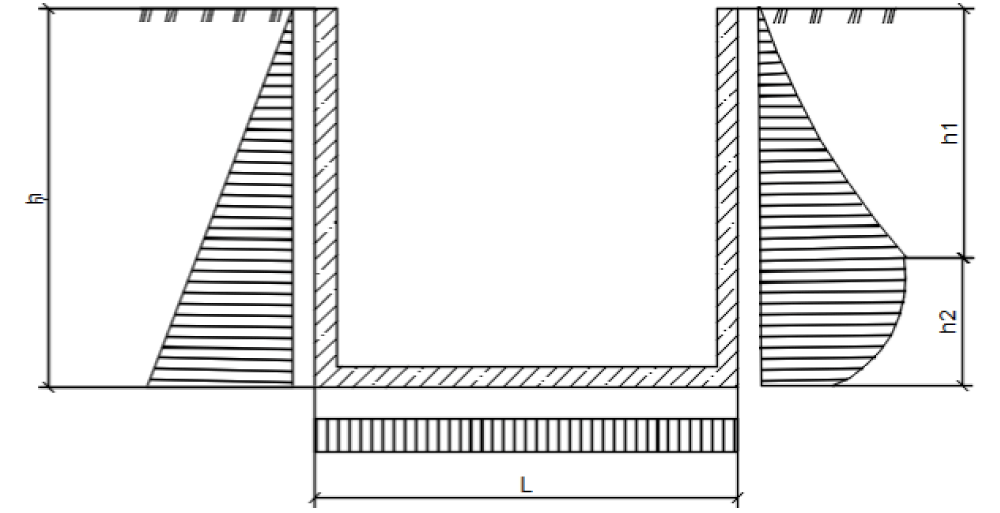
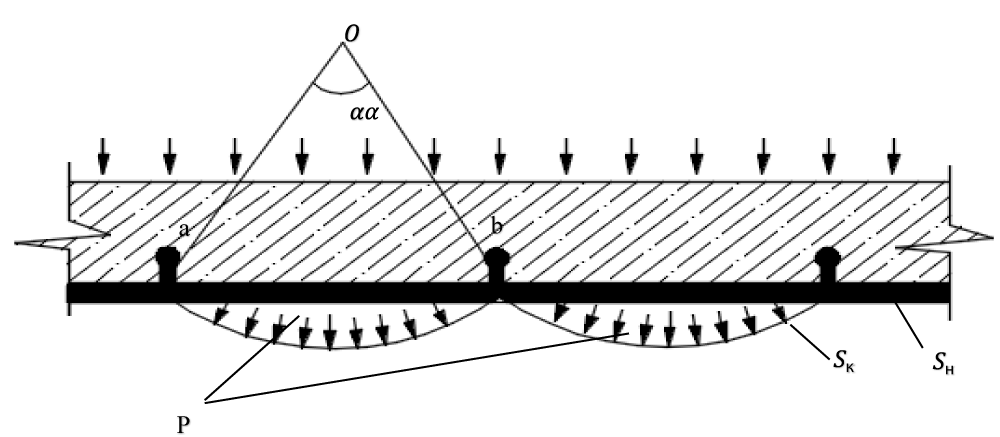

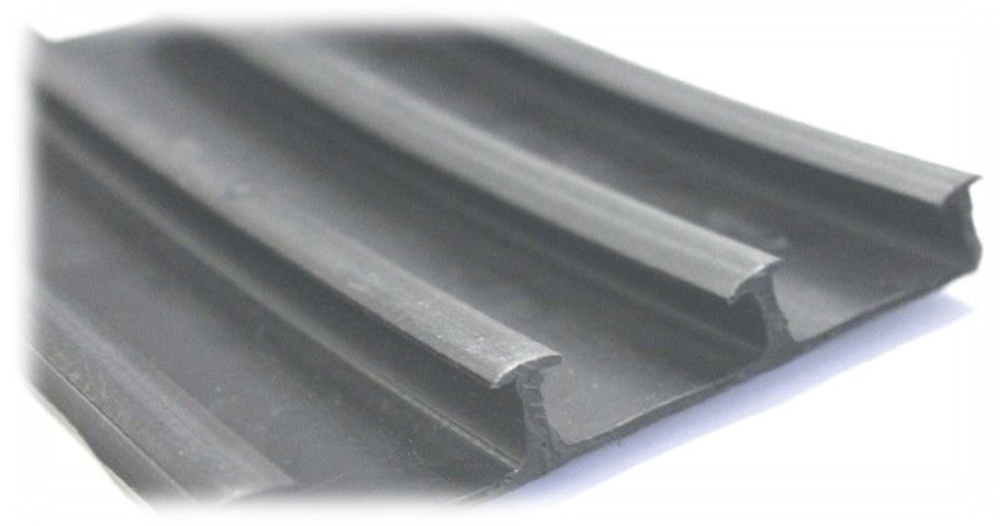
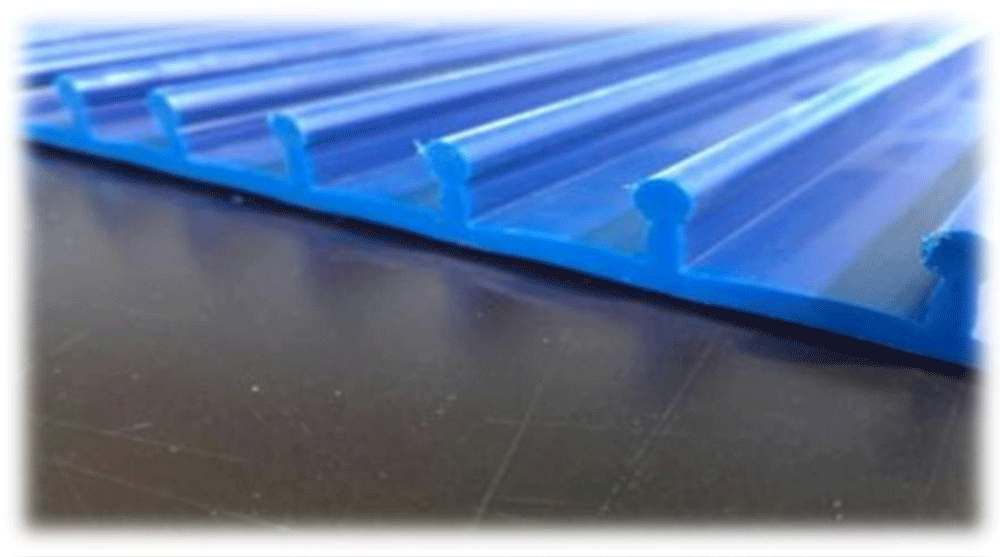

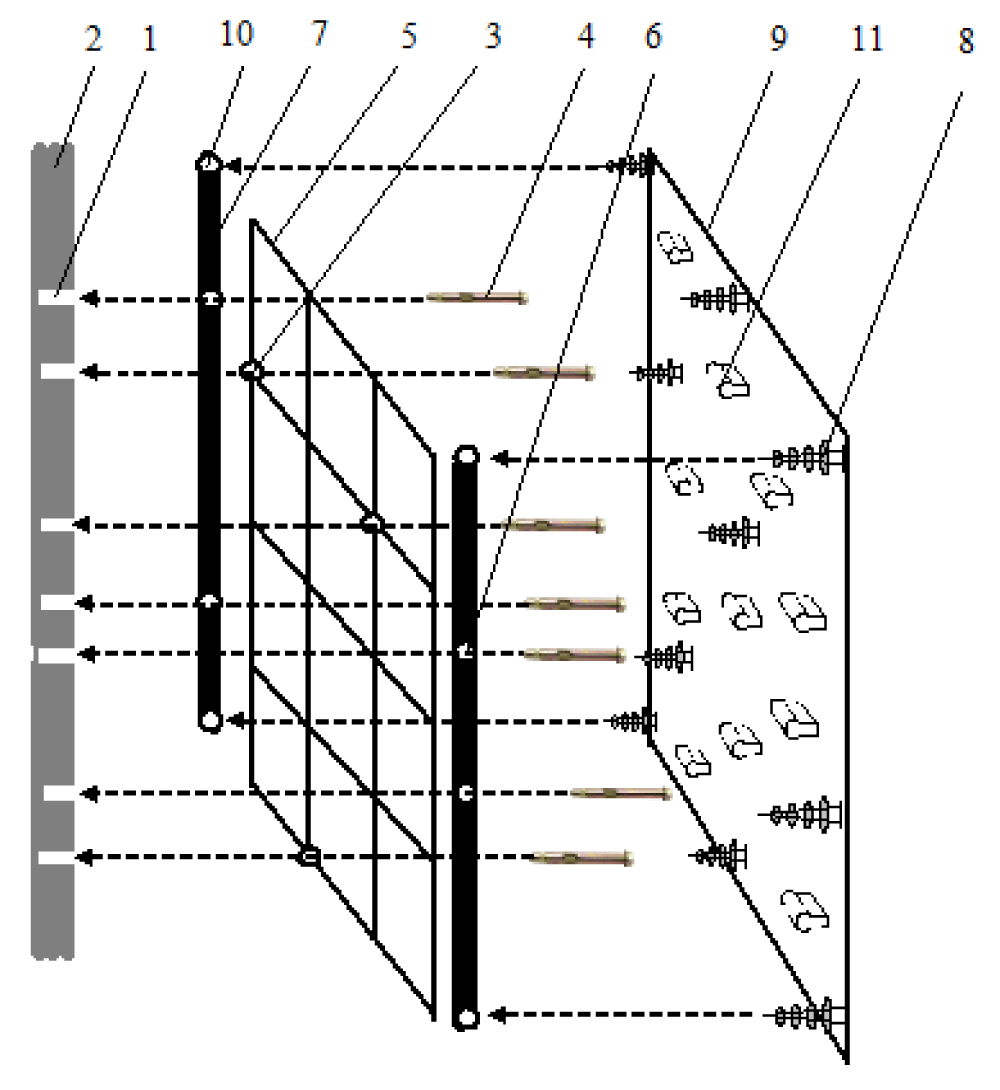


 Save to Mendeley
Save to Mendeley
